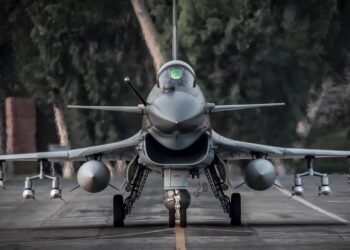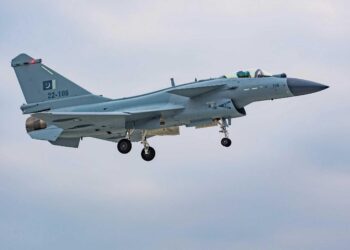Rand Corporation, Recognizing that the conflicts in Iraq and Afghanistan will not be the last of their kind, a new RAND Corporation study issued today finds that U.S. capabilities to meet the threat of Islamist insurgencies are seriously deficient and out of balance.
The report finds that large-scale U.S. military intervention and occupation in the Muslim world is at best inadequate, at worst counter-productive, and, on the whole, infeasible. The United States should shift its priorities and funding to improve civil governance, build local security forces, and exploit information — capabilities that have been lacking in Iraq and Afghanistan.
“Violent extremism in the Muslim world is the gravest national security threat the United States faces,” said David C. Gompert, the report's lead author and a senior fellow at RAND, a nonprofit research organization. “Because this threat is likely to persist and could grow, it is important to understand the United States is currently not capable of adequately addressing the challenge.”
The findings are from a major review of strategies to combat insurgencies RAND initiated at the request of the Department of Defense.
The study finds that when infected by religious extremism, local insurgencies become more violent, resistant to settlement, difficult to defeat and likely to spread. The jihadist appeal to local insurgents is the message that their faith and homelands are under attack by the West and they should join the larger cause of defending Islam. This makes U.S. military intervention not only costly, but risky.
While the recent military surge has improved security in much of Iraq, “it would be a profound mistake to conclude from it that all the United States needs is more military force to defeat Islamist insurgencies,” Gompert said. “One need only contemplate the precarious condition of Pakistan to realize the limitations of U.S. military power and the peril of relying upon it.”
The authors cite data from some 90 conflicts since World War II that show the surest way to defeat insurgencies is to foster local governments that are seen by their citizens as representative, competent and honest. “Foreign forces cannot substitute for effective local governments, and they can even weaken their legitimacy,” said co-author John Gordon.
Historically, large-scale military intervention against insurgencies — e.g., France in Indochina and Algeria and the Soviet Union in Afghanistan — more often fails than succeeds.
The study finds that because it can take time for a local insurgency to acquire strength and turn jihadist, the chances of defusing an insurgency are better than 90 percent when caught early. But those chances drop to less than 50 percent if the insurgency has the chance to become a full-blown uprising. Thus, the United States needs the ability to interpret “indicators and warnings” so it can act in the early stages of the insurgency.
The United States can be more effective in countering insurgencies in the Muslim world, the study finds, by strengthening its capabilities:
– To build effective and legitimate local governments.
– To organize, train, equip and advise indigenous military and police forces.
– To gather, share and exploit information.
Among the many functions a capable local government must perform, three are critical to counterinsurgency: job training and placement of ex-combatants; an efficient and fair justice system, including laws, courts and prisons; and accessible mass lower education.
“When it comes to building these and other civil capabilities abroad, the United States is alarmingly weak,” Gompert said. “To fix this problem, the federal government will need a dramatic increase in civilian capabilities, new organizational arrangements, and more flexible personnel policies.”
The authors estimate that the United States would need to add thousands of deployable civilian professionals and billions more in targeted foreign aid to meet counterinsurgency needs. However, such requirements could be halved if U.S. allies and international organizations matched U.S. efforts.
The report also finds that U.S. forces are unable to train enough local forces of sufficient quality quickly enough to counter fast-moving Islamist insurgencies. The U.S. Army, Marine Corps and Special Operations Forces must improve their ability to organize, train, equip and advise local military forces. Building police forces should be done by professional police trainers, not military troops.
As the ability to build local forces is improved, U.S. military capabilities should concentrate on border and coastal surveillance, technical intelligence collection, air mobility, large-scale logistics, and special operations against high-value targets.
Cyber-savvy Islamist insurgents have broken U.S. domination in exploiting information. The report proposes ways for the United States to improve information networking (accessing and sharing information), cognition (understanding situations and using the information effectively), and psychology (knowing and influencing the population).
The report recommends a new information-sharing architecture — Integrated Counterinsurgency Operating Network (ICON) — that would foster and rely on universal cell phone use, “wikis” and video monitoring. Such a system would maintain operational security while allowing for fast-moving information among U.S. military, intelligence, civilian, allied and local agencies.
Meanwhile, the United States should discard “pro-America” themes in favor of strengthening local government, while at the same time highlighting evidence that jihadists are failing to meet the basic needs of the local population.
So great are U.S. deficiencies for counterinsurgency in some areas, the report finds, that multilateral collaboration is not just desirable but imperative. U.S. allies and international organizations have significant capacity in areas where the United States is weak, including building education, health and justice systems, and training police and gendarmerie forces. While such allied capabilities are not readily deployable at present, intense planning by NATO, European Union and United Nations agencies could help meet this goal.
“It is a matter of strategic importance that the United States and its European allies end the diplomatic impasse in NATO-EU cooperation,” Gompert said.
Assuming allied and multilateral participation, the additional annual costs for acquiring, maintaining and using adequate U.S. counterinsurgency capabilities is $20 billion to $30 billion. Individual components include $11million to $17 billion for civilian personnel and foreign assistance, $2 billion to $3 billion for training and equipping local security forces, $4 billion to $6 billion for applying ICON and related information systems, and $3 billion to $4 billion for military-force enhancements.
The report, “War by Other Means: Building Complete and Balanced Capabilities for Counterinsurgency,” is available at www.rand.org. The study was funded by the U.S. Department of Defense.
The report was prepared by the RAND National Defense Research Institute, a federally funded research and development center that does research for the Office of the Secretary of Defense, the Joint Staff, the unified commands and other defense agencies.
The RAND Corporation is a nonprofit research organization providing objective analysis and effective solutions that address the challenges facing the public and private sectors around the world.
Trump announces ‘full and immediate’ India-Pakistan ceasefire
US President Donald Trump on Saturday announced a ceasefire agreement between India and Pakistan after days of deadly jet fighter,...









